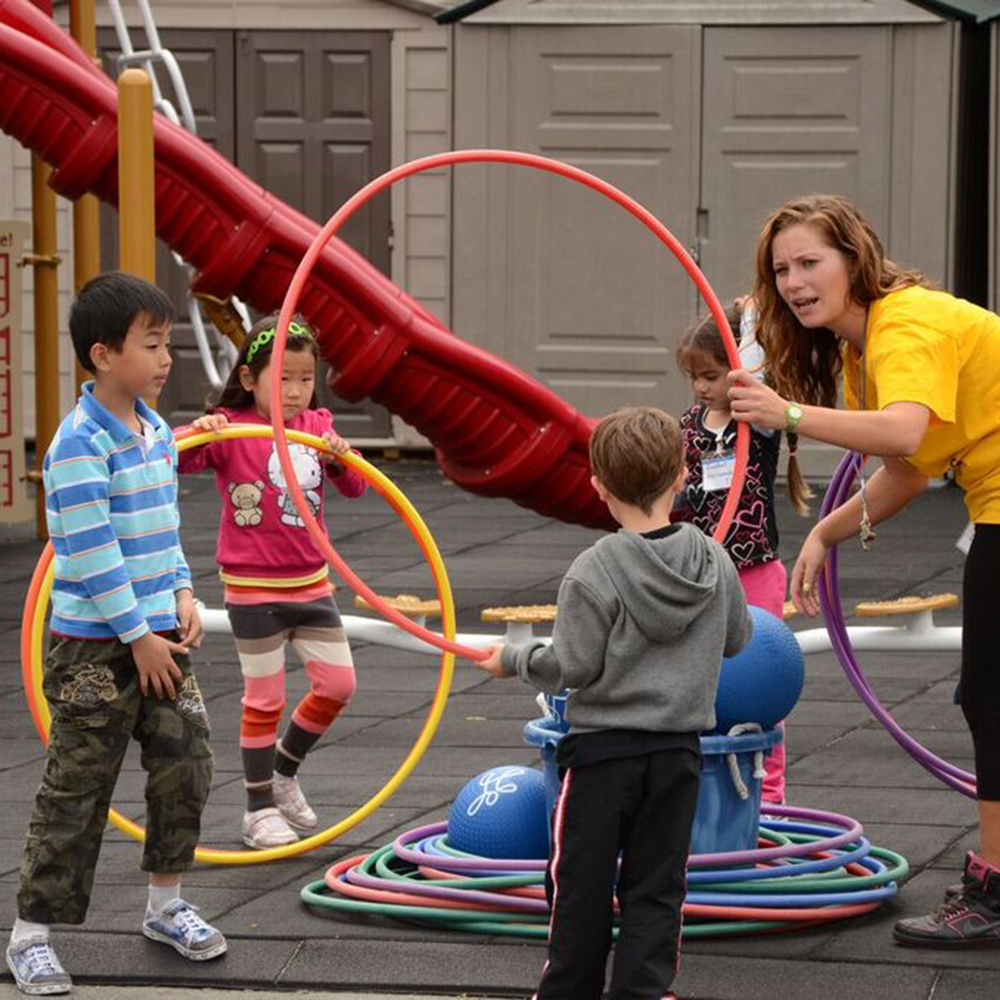Create a new game using old sports equipment! In this group activity, children develop creativity and decision-making skills through improvisational game play.
Materials Required
- A range of sports equipment (hula-hoops, balls, cones, ropes, etc.)
- A large area to create and play a game
Instructions
- Gather various pieces of sports equipment and find an area that has enough room to make up and practice a game.
- In a group, work together to make up a game using the sports equipment available. Questions to consider: What is the goal of the game? How can you use each item in the game? Is it played in teams? Is it played for speed, highest score, accuracy or something else?
- Establish boundaries, rules, turns, equipment use, and any other specific information for the game.
- Choose a name for the game and play!
Additional Tips
Try these add-on activities:
- Take away or add a piece of new equipment to slightly change the game. How does this small change affect the game?
- Create multiple games using the same equipment.
- Write down each game created and make a Book of Games.


